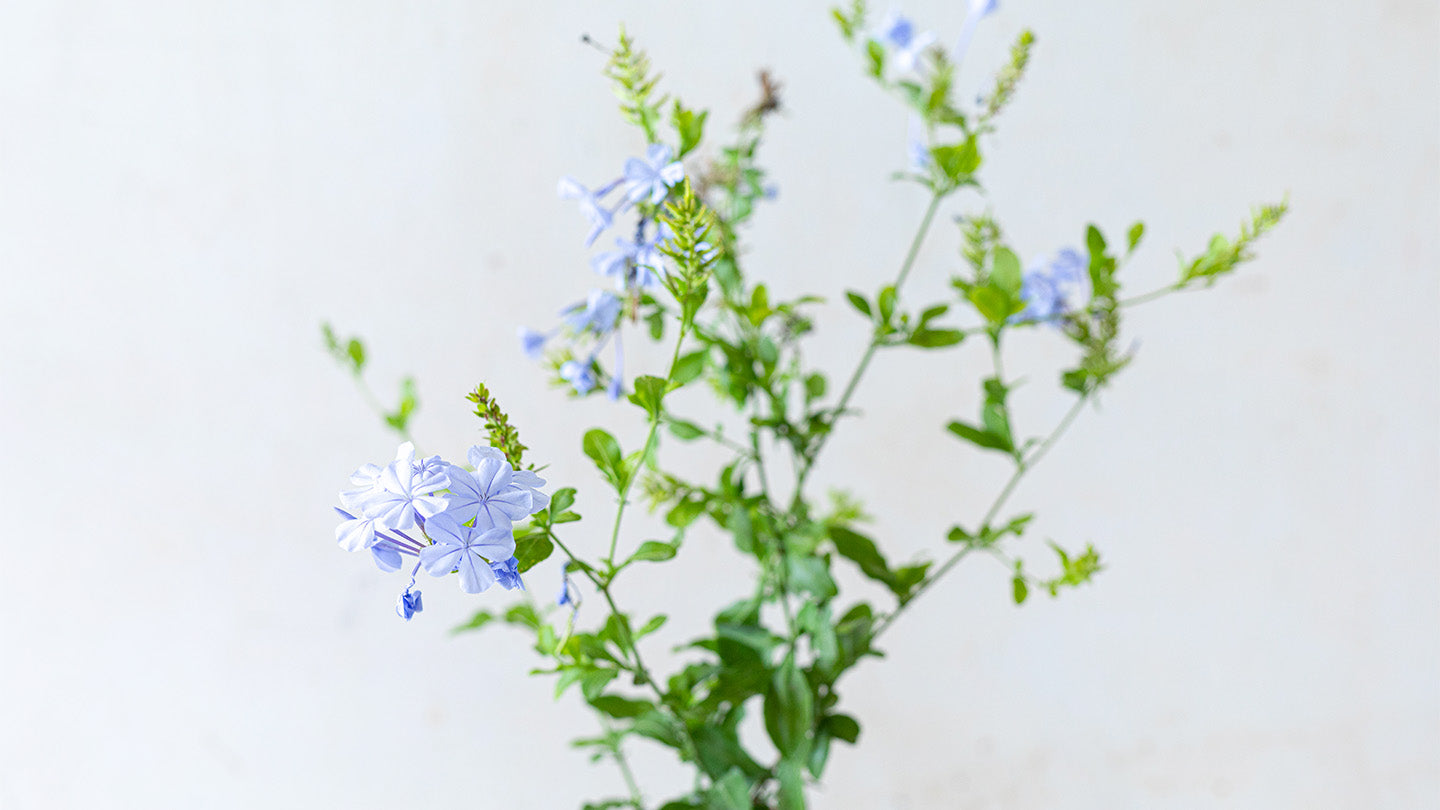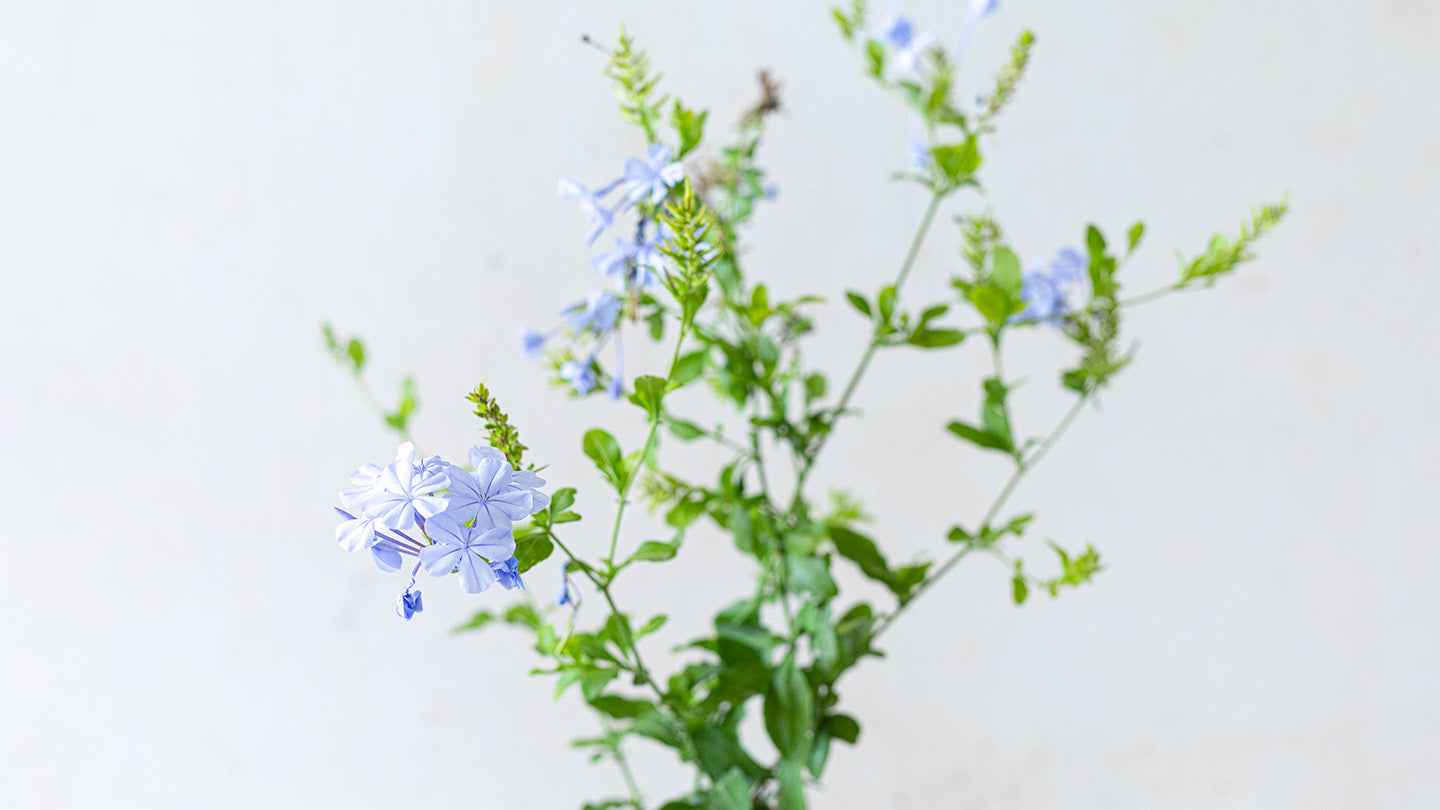cybloom
Plumbango-Leadwort
Regular price
€7,50 EUR
Regular price
Sale price
€7,50 EUR
Unit price
per
Tax included.
Couldn't load pickup availability
Family: Plumbaginaceae
Origin: Western Asia
The Size: 8-12 inches tall, 1-1.5 feet wide
Temperature & Humidity: When choosing a leadwort variety, consider your hardiness zone. Some plants will not remain evergreen in cooler zones. They will wilt in very hot weather but typically bounce back once the temperature cools. They also benefit from a light layer of mulch for winter protection, especially in the colder parts of their growing zones where they might not be fully hardy. Be sure to remove the mulch come spring once new growth is beginning. Humidity typically is not an issue as long as soil moisture needs are being met.
Lightning: Leadwort plants can grow either in full sun or partial shade. The best flowering will occur in full sun, though the plants do benefit from afternoon shade in hot climates, particularly during the summertime.
The Soil: These plants are tolerant to most soil types, including sandy, loamy, and clay soils, as long as the planting site has good drainage. The best performance will occur in slightly acidic soil, but leadwort readily grows in neutral and in slightly alkaline soils.
The Soil: These plants are tolerant to most soil types, including sandy, loamy, and clay soils, as long as the planting site has good drainage. The best performance will occur in slightly acidic soil, but leadwort readily grows in neutral and in slightly alkaline soils.
Watering: Leadwort has moderate moisture needs—roughly 1/2 inch of water per week is usually sufficient. Water during prolonged periods of drought to prevent the soil from fully drying out. But make sure your plants don’t become waterlogged, as they can easily rot in such conditions.
Fertilizer: Leadwort likes somewhat fertile soil. Apply a balanced, slow-release fertilizer in the early spring as new growth is picking up. Fertilize again in the early summer to help the plant fill out. Do not fertilize in the late summer, as this will promote tender new growth that will be vulnerable and could weaken the plant as the fall temperatures cool.
Reproduction: Propagating by root cuttings is another easy method of creating new plants. In early spring, dig up a section of the root ball and find good, thick pieces at least 1/2 inch thick. Snip the root sections into 4- to 6-inch-long segments, and plant them about 1/2 inch deep in small pots filled with commercial potting soil. Keep the pots moist in a bright but shaded location until they sprout and begin producing new leaves. Grow for another few weeks in the pot, then transplant into the garden.
Transfer: Leadwort makes a good "spiller" plant for mixed outdoor container gardens. Ordinary commercial potting mix makes a suitable growing medium; make sure containers have good drainage. Container plants should be placed in a sheltered outdoor location for the winter; or, grow as annuals. This is not a plant suitable for overwintering indoors. Regular division and repotting will be necessary if growing leadwort in a permanent container, as these plants will quickly fill their pots.
Features of Care: In ideal circumstances, these plants can be aggressive, though they stop short of earning the "invasive" label. They are great at helping to choke out weeds when planted as a ground cover. When given the proper growing conditions, leadwort doesn't require much care. Simply water if the soil is getting too dry, and fertilize in the spring and summer. Leadwort is not plagued by any serious insect or disease problems.
Difficulties: There are only a small handful of common complaints about leadwort:
Plants are Slow to Leaf-Out in Spring. It is normal for leadwort to leaf out rather late in the spring. Many gardeners like to intersperse spring bulbs among leadwort plants since the bulb flowers and foliage will fade about the time that leadwort begins to actively grow.
Plants Spread Too Fast
Although leadwort is usually not regarded as an invasive plant, its rhizomatous roots may spread faster than you like. It's generally an easy enough matter to pluck out the volunteer seedlings and to dig up and remove roots to keep the plant within your desired boundaries.
Plants Don't Return in Spring
If your leadwort plants don't return at all in the spring, unseasonable winter cold has killed the roots. This is most likely to occur in zone 5, where the plant is borderline hardy. It's also possible that excessive winter moisture has suffocated the crowns and killed the plants. Leadwort likes well-draining soil, and soggy winter soil can sometimes kill the plants.
Plants are Slow to Leaf-Out in Spring. It is normal for leadwort to leaf out rather late in the spring. Many gardeners like to intersperse spring bulbs among leadwort plants since the bulb flowers and foliage will fade about the time that leadwort begins to actively grow.
Plants Spread Too Fast
Although leadwort is usually not regarded as an invasive plant, its rhizomatous roots may spread faster than you like. It's generally an easy enough matter to pluck out the volunteer seedlings and to dig up and remove roots to keep the plant within your desired boundaries.
Plants Don't Return in Spring
If your leadwort plants don't return at all in the spring, unseasonable winter cold has killed the roots. This is most likely to occur in zone 5, where the plant is borderline hardy. It's also possible that excessive winter moisture has suffocated the crowns and killed the plants. Leadwort likes well-draining soil, and soggy winter soil can sometimes kill the plants.


